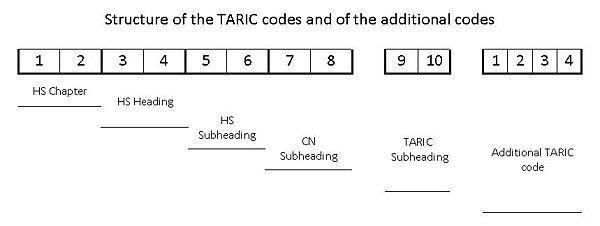 | ||
The TARIC code (TARif Intégré Communautaire; Integrated Tariff of the European Communities) is designed to show the various rules applying to specific products when imported into the EU. This includes the provisions of the harmonised system and the combined nomenclature but also additional provisions specified in Community legislation such as tariff suspensions, tariff quotas and tariff preferences, which exist for the majority of the Community’s trading partners. In trade with third countries, the 10-digit Taric code must be used in customs and statistical declarations.
Contents
Overview
TARIC builds upon the international harmonised system
Challenges in classification for companies
- Variety of products---Companies who do import and export meet challenges of how to classify products with the growing varieties of products. Classification and restrictions, to some extent, has a bad effect on free trading and growing of business.
- Risk of loss caused by difference in classification---Firstly, the proper classification of your item is essential to determine any licensing requirements under the Export Administration Regulations(EAR). And subsequently exporters and importers need to be aware of how to classify the products accordingly and which category should be classified to. And finally they may be required to obtain a license. A slight difference in classification can mean a huge difference in the duties that are paid.
So a proper classification can save huge amount of money for the company which is why nowadays importers and exporters are dying to find a perfect way to solve those problems above.
